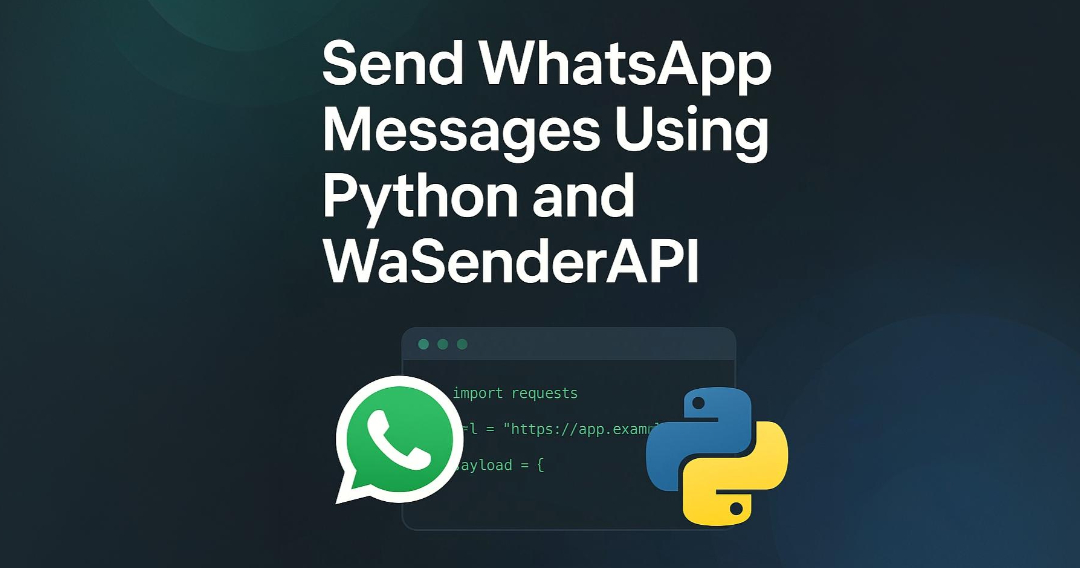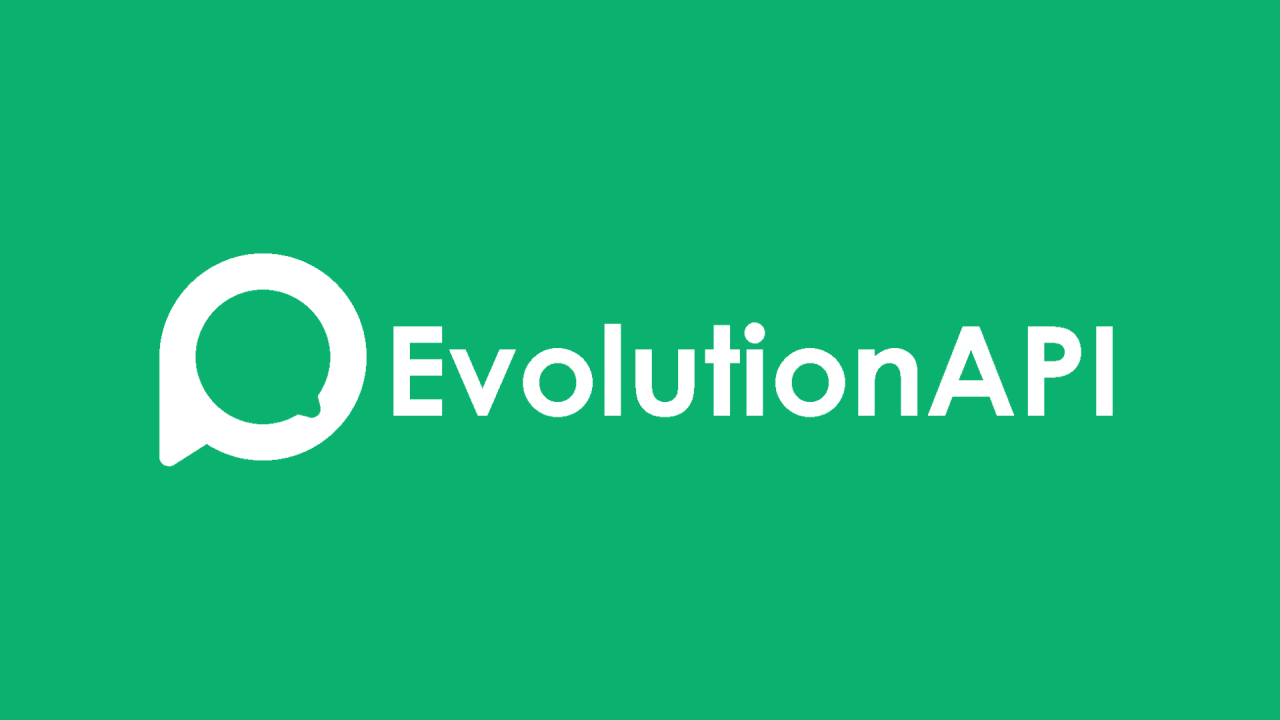How to Send WhatsApp Messages in Python Using WaSenderAPI (Complete Guide)

Send WhatsApp Messages with Python & WaSenderAPI: The Correct Guide
Unlock the potential of direct communication! Learn the correct and most effective way to integrate WaSenderAPI with your Python applications to send automated WhatsApp messages. This comprehensive guide covers sending basic text messages and rich media like images and documents, empowering you to build powerful communication workflows.
For developers looking to enhance user engagement, streamline notifications, or automate customer interactions, connecting your Python code to a reliable WhatsApp API is essential. WaSenderAPI offers a robust and cost-effective solution. Let's dive into the accurate method for integration.
📌 What You'll Need (Requirements)
To follow along and start sending messages, ensure you have the following prerequisites in place:
- Python 3.x: Make sure you have a recent version of Python installed on your system.
- An Active WaSenderAPI Account: You'll need an account to get your API key and access the service. Sign up or learn more at WaSenderAPI.com.
- Your WaSenderAPI API Key: Find this unique key in your WaSenderAPI dashboard. It's your authentication token used in the request header. (Need help finding your API key?)
- A Phone Number Registered with WhatsApp: This number will be used as the sender via your WaSenderAPI setup.
- Recipient's Phone Number: The target number, including the full international country code (e.g., +1234567890).
🚀 Step 1: Install the Requests Library
Our interaction with the WaSenderAPI will be via HTTP requests with a JSON payload. The standard Python library for this is requests. If you don't have it, install it using pip:
pip install requestsThis command fetches and installs the library, enabling your Python scripts to easily make API calls and send JSON data.
⚙️ Step 2: Write Your Python Code to Send a WhatsApp Message
Now for the core part: writing the Python code to send your first WhatsApp message using the WaSenderAPI. Based on the correct API documentation, we'll construct the necessary headers, define the API endpoint, and prepare the JSON data payload.
Here’s the corrected code snippet to send a simple text message:
import requests
import json # Used for creating and pretty printing the payload
# The CORRECT WaSenderAPI endpoint for sending messages
api_url = "https://www.wasenderapi.com/api/send-message"
# Your API key - used in the Authorization header
API_KEY = "YOUR_API_KEY" # <--- Replace with your actual API Key
# The recipient's phone number with country code
RECIPIENT_NUMBER = "+1234567890" # <--- Replace with the recipient's actual number
# Headers required for authentication and specifying content type
headers = {
"Authorization": f"Bearer {API_KEY}",
"Content-Type": "application/json"
}
# The JSON payload for a text message
text_payload = {
"to": RECIPIENT_NUMBER,
"text": "Hello from your Python script via WaSenderAPI using the correct method!"
}
print("Attempting to send text message...")
response_text = None # Initialize response variable
try:
# Send the POST request with headers and JSON payload
response_text = requests.post(api_url, headers=headers, json=text_payload)
response_text.raise_for_status() # Raise an exception for bad status codes (4xx or 5xx)
# Print the API response for confirmation
print("Text Message Status Code:", response_text.status_code)
print("Text Message Response Body:")
print(json.dumps(response_text.json(), indent=4))
except requests.exceptions.RequestException as e:
print(f"An error occurred while sending the text message: {e}")
if response_text is not None:
print("Response Body:", response_text.text)
print("Please double-check your API key, the recipient number format, and the API endpoint.")
API Parameters Explained:
"to": The recipient's phone number, including the country code (e.g., "+447900123456")."text": The content of your message. Crucially, if you are sending media (like an image or document), the value of the"text"parameter will be used as the CAPTION for that media. If no media URL is provided,"text"will be the main message body."imageUrl"(Optional): The direct, publicly accessible URL of an image you want to send."documentUrl"(Optional): The direct, publicly accessible URL of a document you want to send.- And others for different media types (see API docs).
🖼️ Go Beyond Text: Sending Images and Documents (Correct Method)
Sending rich media like images and documents is straightforward with WaSenderAPI using the correct parameters and JSON structure. Remember that the "text" parameter will serve as the caption when sending media.
Sending an Image with a Caption
To send an image, include the imageUrl parameter along with to and optionally text for the caption:
# ... (previous imports, api_url, API_KEY, RECIPIENT_NUMBER, and headers definitions)
image_payload = {
"to": RECIPIENT_NUMBER,
"text": "Check out this cool image!", # This text will be the caption
"imageUrl": "https://file-examples-com.github.io/uploads/2017/10/file_example_PNG_480x320.png" # <--- Replace with the public URL of YOUR image
}
print("\nAttempting to send image message...")
response_image = None # Initialize response_image variable
try:
response_image = requests.post(api_url, headers=headers, json=image_payload)
response_image.raise_for_status()
print("Image Message Status Code:", response_image.status_code)
print("Image Message Response Body:")
print(json.dumps(response_image.json(), indent=4))
except requests.exceptions.RequestException as e:
print(f"An error occurred while sending the image: {e}")
if response_image is not None:
print("Response Body:", response_image.text)
print("Ensure the image URL is correct and publicly accessible.")
Sending a Document with a Caption
To share a document (like a PDF, DOCX, etc.), use the documentUrl parameter, again using text for the caption:
# ... (previous imports, api_url, API_KEY, RECIPIENT_NUMBER, and headers definitions)
document_payload = {
"to": RECIPIENT_NUMBER,
"text": "Please find the attached report.", # This text will be the caption
"documentUrl": "https://www.w3.org/WAI/ER/tests/xhtml/testfiles/resources/pdf/dummy.pdf" # <--- Replace with the public URL of YOUR document
# Note: The filename might be inferred from the URL or API settings, check docs
}
print("\nAttempting to send document message...")
response_document = None # Initialize response_document variable
try:
response_document = requests.post(api_url, headers=headers, json=document_payload)
response_document.raise_for_status()
print("Document Message Status Code:", response_document.status_code)
print("Document Message Response Body:")
print(json.dumps(response_document.json(), indent=4))
except requests.exceptions.RequestException as e:
print(f"An error occurred while sending the document: {e}")
if response_document is not None:
print("Response Body:", response_document.text)
print("Ensure the document URL is correct and publicly accessible.")
Discover All Media Types: WaSenderAPI supports sending various media types like videos, audio, stickers, location, and contacts. For the definitive list of supported parameters and message structures, always refer to the official and most up-to-date WaSenderAPI API Documentation.
📋 Interpreting the API Response
When you send a request to the WaSenderAPI using the correct endpoint and headers, the response structure indicates the result of your API call.
A successful message submission request typically returns a 200 OK HTTP status code and a JSON response indicating the message was accepted, similar to this structure (the exact body might vary slightly based on API specifics):
{
"status": true,
"message": "Message queued for sending"
// May include other details like message ID
}
A "status": true generally means your request was syntactically correct, authenticated successfully, and the message has been queued by WaSenderAPI. The "message" field provides a descriptive status.
If there's an error (e.g., invalid API key, incorrect payload structure, rate limiting), you'll receive a different HTTP status code (like 400, 401, 403) and a JSON response detailing the problem:
{
"status": false,
"message": "Description of the error, e.g., Invalid API Key",
// May include error codes or other diagnostic info
}
Always check both the HTTP status code of the response and the `status` and `message` fields in the JSON body for comprehensive feedback on your API requests.
🛡️ Best Practices for a Reliable and Secure Integration
To ensure your Python and WaSenderAPI integration is robust, secure, and performs well, follow these essential tips:
- Protect Your API Key: Never hardcode your WaSenderAPI key directly in your scripts. Use environment variables or a secure configuration management system.
- Validate Inputs: Sanitize and validate all user inputs, especially recipient phone numbers and media URLs, before sending them to the API.
- Implement Robust Error Handling: Use
try...exceptblocks around your API calls to catch potential errors (network issues, API errors) and log detailed information to help diagnose issues quickly. Check both HTTP status codes and the JSON response body for error details. - Respect API Rate Limits: Consult the WaSenderAPI documentation for any rate limits and build your application logic to handle them gracefully, potentially using queues or delays for bulk sending.
- Monitor Delivery Status: If WaSenderAPI offers webhooks or delivery reports, configure them to get asynchronous feedback on the actual delivery status of your messages to the recipient's device.
- Keep Dependencies Updated: Regularly update the
requestslibrary and your Python version to benefit from security patches, performance improvements, and new features. - Refer to Official Docs: The official WaSenderAPI documentation is the definitive source for accurate and up-to-date information on endpoints, parameters, and best practices.
✅ Conclusion
By following this corrected guide, you now have the accurate method for connecting Python with WaSenderAPI to send automated WhatsApp messages, including text, images, and documents. Utilizing the correct endpoint, Authorization header, and JSON payload structure is crucial for a successful integration.
This capability is a powerful tool for automating communications, improving user engagement, and building more interactive applications. Remember to dive into the comprehensive WaSenderAPI documentation to explore all the advanced features and unlock the full potential of the API for your specific needs.
Interested in integrating WhatsApp messaging into a Next.js application? Click here for our Next.js guide.
Related Posts

Evolution API Problems 2025 — Issues, Errors & Best Alternative (WasenderAPI)
Evolution API has become difficult to maintain in 2025 with frequent disconnections, complex setup, high resource usage, and constant instability. This post explains the real problems developers face and why more businesses are switching to WasenderAPI, the most stable and affordable unofficial WhatsApp API alternative.

Alternativa a WAAPI: WasenderAPI, WhatsApp API confiable y económica
WAAPI no funciona más. Descubre WasenderAPI, la mejor alternativa para enviar mensajes ilimitados, automatizar WhatsApp y mantener múltiples sesiones con precios accesibles.

La Mejor API de WhatsApp para n8n: Automatiza Mensajes Eficientemente
Descubre cuál es la API de WhatsApp ideal para usar con n8n. Aprende a automatizar mensajes, elegir la API adecuada y sacar el máximo provecho con integraciones simples y seguras.
